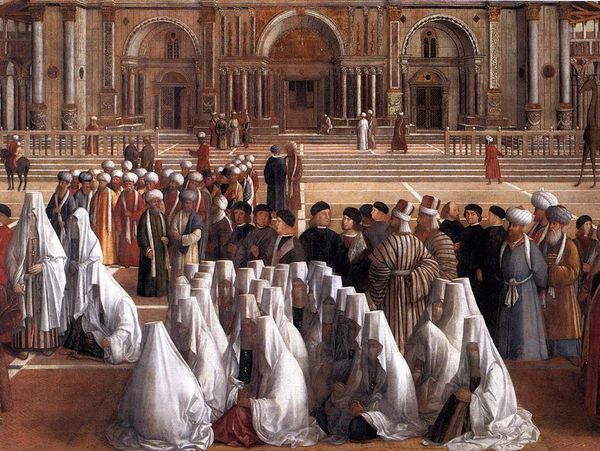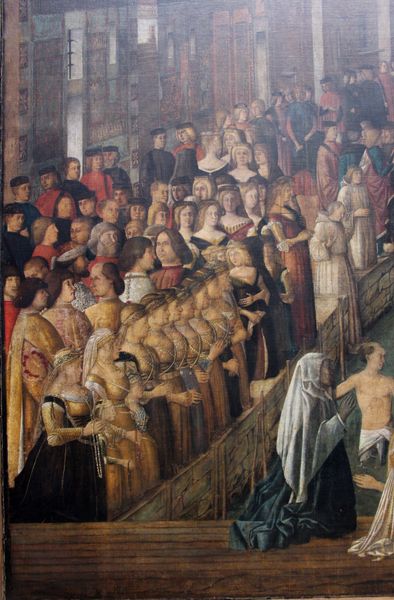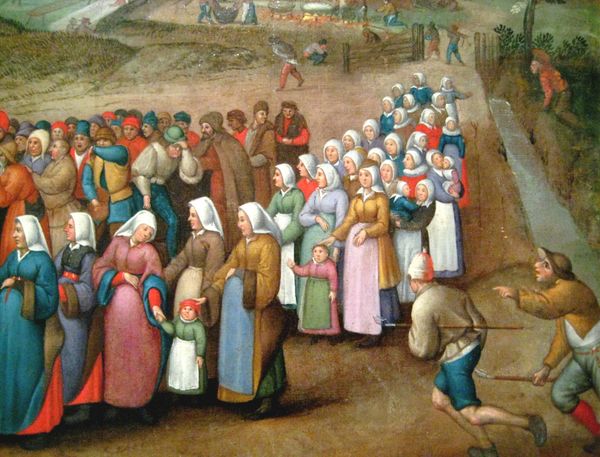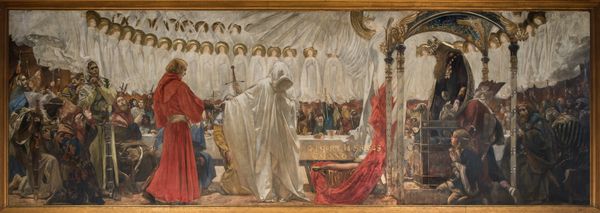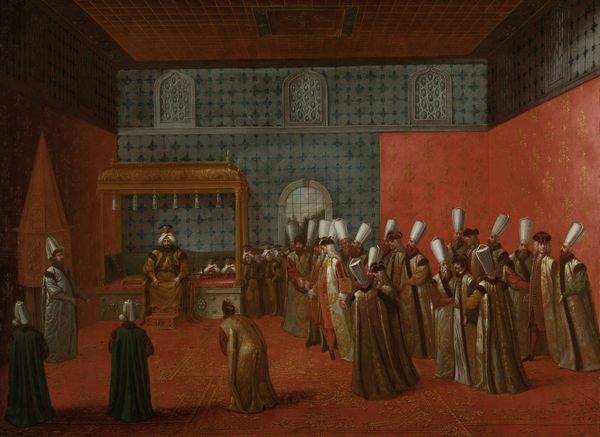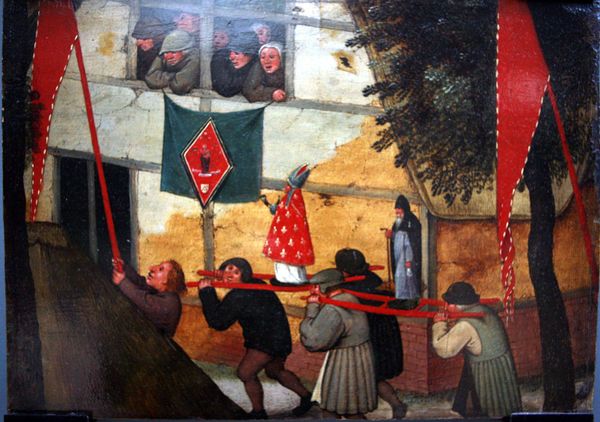
painting, oil-paint
#
portrait
#
venetian-painting
#
painting
#
oil-paint
#
oil painting
#
group-portraits
#
history-painting
#
early-renaissance
Copyright: Public domain
Curator: Looking at this cropped section from Gentile Bellini's "St. Mark Preaching in Alexandria," painted in 1507, I’m immediately struck by the geometry of the veils. Editor: Geometry is the word! The sheer volume of white, pyramidal forms dominates my perception. It’s almost dizzying, and unsettling. The individuals beneath seem to recede, secondary to this overwhelming field of white. Curator: Indeed. Consider that white, often seen as purity, is deployed here in a context of colonial encounter. These veiled figures symbolize more than simple piety, evoking an imposed uniformity—perhaps even erasure of identity under Venetian influence. Editor: The interplay between light and shadow within those veils does create an odd effect, like individual sculptures carved from light itself, although this particular slice gives very little clue to Bellini's masterly deployment of vibrant colors that are evident in the complete work. Curator: Yet, the repetition itself becomes significant, evoking both the collective conversion and a possible visual allusion to funerary shrouds. Could this uniformity suggest not just baptism, but a metaphorical death of their prior identities? Editor: That's quite compelling. Focusing solely on the construction, you notice how the sharp folds create movement despite their stillness. It is a very canny piece of image-making, as well as a narrative. Curator: This brings us back to your initial point about unease. Bellini skillfully uses formal elements to explore complex socio-political narratives of religious conversion and cultural domination within the visual space. Editor: Looking closer, one also gets a small sense of the individual faces beneath—each veiled figure offers a tiny glimpse of humanity which offsets the mass-effect of all those forms. Curator: Agreed. Ultimately, what strikes me is the power of Bellini’s rendering to make us question who controls meaning, especially through a reading of material objects and bodies caught between worlds. Editor: It does that remarkably, despite its somewhat incomplete and cropped character as a fragment, underscoring how even visual scraps possess narrative potential when closely decoded.
Comments
No comments
Be the first to comment and join the conversation on the ultimate creative platform.

